While summer starts to drastically heat up, it is important to know how to be safe in the heat. With heat indexes peaking to the 100's, being informed on the signs of heat exhaustion and heat stroke are crucial as they become increasingly more frequent.
In extreme heat, your body works extra hard to maintain a normal temperature, which can lead to serious heat-related illnesses. Follow these safety tips to stay safe during the hot summer months:
Heat Safety Tips
- Be sure to wear and reapply sunscreen often.
- Slow down and avoid strenuous activity.
- Wear lightweight, loose-fitting, light-colored clothing. Light colors will reflect heat and sunlight and help maintain normal body temperature.
- Check on elderly family members and neighbors.
- Drink plenty of water regularly and often, even if you do not feel thirsty.
- Avoid dehydrating liquids. Alcohol, coffee, tea and caffeinated soft drinks can hurt more than help.
- Avoid direct sun. Find shade or block out the sun if possible.
- Be alert to signs of heat-related illness. Watch for heat cramps, heat exhaustion and heat stroke.
- Never leave people or pets in a closed car.
"Escambia County EMS sees a lot of heat-related illnesses that increase during the summer time," said Escambia County EMS Chief David Torsell. "It is important to stay well-hydrated especially when doing outside activities. We want to make sure that you and your family are safe when out in the heat."
View full Summer Heat Safety PSA here.

Know the warning signs of heat stroke and heat exhaustion:
Heat exhaustion:
- Feeling faint or dizzy
- Excessive sweating
- Cool, pale, clammy skin
- Nausea or vomiting
- Rapid, weak pulse
- Muscle cramps
Heat stroke:
- Throbbing headache
- No sweating
- Body temperature above 103 degrees
- Red, hot, dry skin
- Nausea or vomiting
- Rapid, strong pulse
- May lose consciousness
If there are symptoms of heat stroke, call 911 and take immediate action to cool the person until help arrives. If there are symptoms of heat exhaustion, get to a cooler, air conditioned place, drink water (if fully conscious) and take a cool shower or use a cold compress.
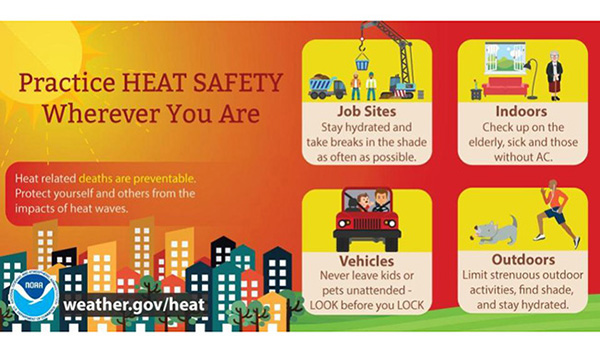
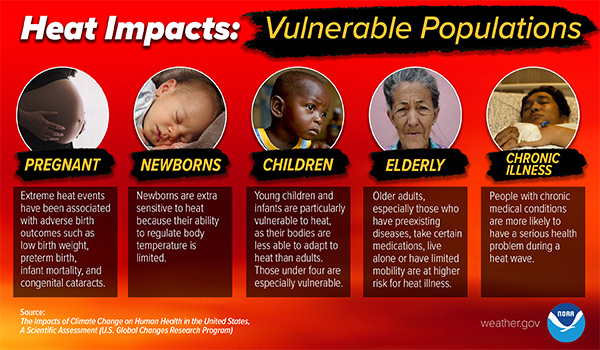
Hot Car Safety Tips
- “Look before you lock!” Even if you assume you are travelling without companions, double check your back seats before exiting your vehicle.
- Place a reminder item such as a stuffed animal in your vehicle’s passenger seat to ensure you remember to assist all passengers in exiting the vehicle when you arrive at your destination.
- Keep your vehicle locked and your keys out of reach. Children can potentially lock themselves inside hot vehicles on accident.
- Do not assume your passengers are always capable of exiting a vehicle alone. Check in with all of your passengers and assist them in exiting the vehicle when necessary.
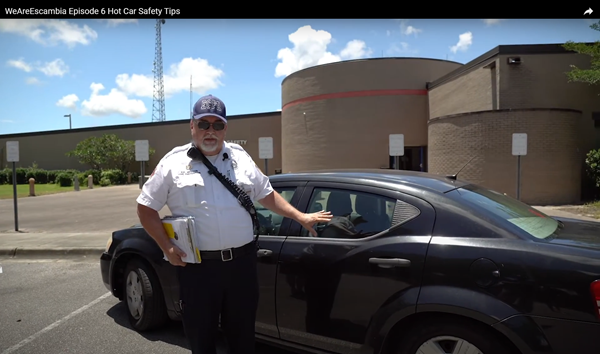
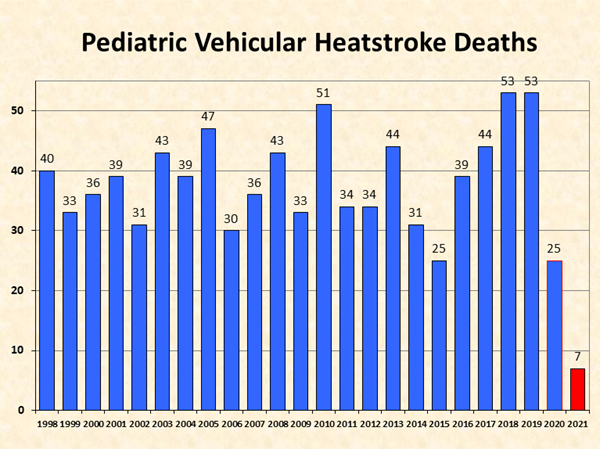
Source: National Weather Service
Pet Safety Tips For Warm Weather
- Pets can overheat quickly in warm weather. Make sure your pet has plenty of fresh water and access to shade to avoid over-heating.
- Be able to recognize symptoms of heat exhaustion in your pet such as difficulty breathing, excessive panting, weakness or increased drooling. If you notice these symptoms relocate your pet to a cool area.
- Never leave your pet in an unattended vehicle. When driving with your pet, leave an item such as your purse or cell phone in the backseat to ensure you remember to retrieve both the item and your pet when you reach your destination.
- Limit the time your pet spends on hot asphalt. Hot asphalt can increase the chance of over-heating in pets and can, in some cases, burn your pet’s paw pads.
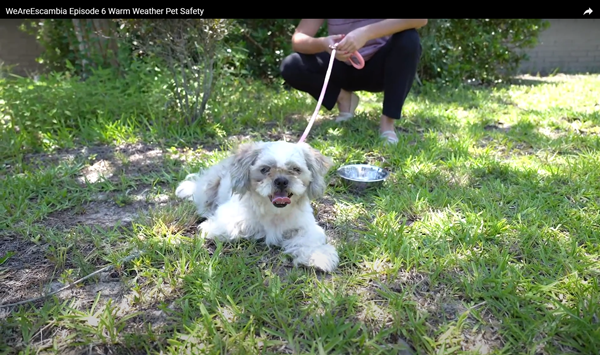
To learn more about heat safety, visit Extreme Heat or weather.gov/heat. You can also follow @BeReadyEscambia on Twitter and like Escambia County Emergency Management on Facebook for the latest news and updates on emergencies impacting our community.
